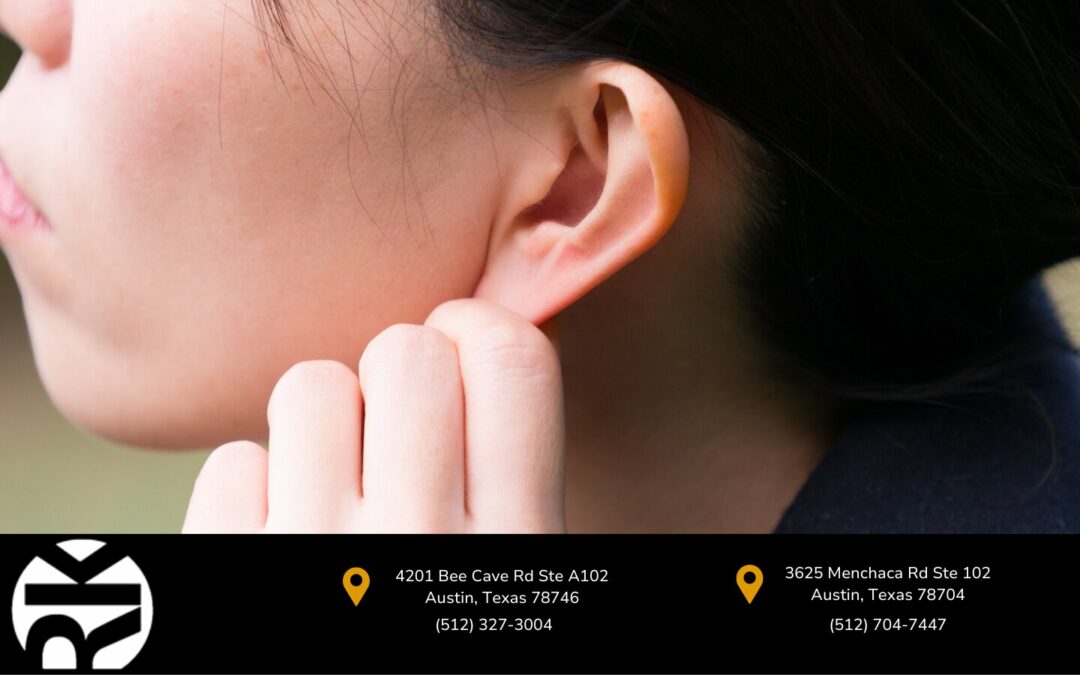
by Paula Rivers Au.D | Mar 11, 2024 | News
Excessive earwax can lead to temporary hearing loss by blocking the ear canal and obstructing sound waves from reaching the eardrum. With proper earwax removal, this condition will not cause discomfort nor decrease your overall hearing ability.
Let’s explore more about earwax – purpose, symptoms of excessive buildup, and ways to address it.
What Is Earwax and What Is Its Purpose?
Earwax, medically known as cerumen, is produced by glands in the ear canal from secretions and dead skin cells. It has a slightly sticky texture, acting as a protective barrier to trap foreign particles like dust, bacteria, and bugs. Think of earwax as the bouncer at a nightclub, keeping out unwanted guests and safeguarding our ears from potential harm.
Understanding how earwax safeguards our hearing emphasizes its significance in maintaining healthy auditory systems.
Indications of Excessive Earwax
Excessive earwax may lead to discomfort and various health issues. Signs include earaches, a constant fullness sensation, ringing or buzzing sounds (tinnitus), hearing loss, and even dizziness. A noticeable odor may also be present in the ear(s) if left unchecked.
Carefully monitoring these signs and seeking professional help when needed allows for maintaining healthy ears.
Earwax Buildup: The Culprit Behind Hearing Loss?
While earwax is beneficial, an imbalance can lead to conductive hearing loss. This occurs when sound waves are impeded from traveling properly through the ear. Excessive earwax can block sound waves, resulting in muffled and diminished hearing.
Addressing potential earwax buildup should be a high priority if you find yourself frequently asking people to repeat themselves or struggling to follow conversations in noisy places.
Professional earwax removal is often necessary to restore clear hearing. Attempting at-home solutions like cotton swabs poses risks, potentially pushing wax further into the ear canal and causing temporary hearing loss.
Understanding how excessive earwax affects hearing is crucial in taking proactive measures for maintaining auditory health.
DIY: Safe Home Remedies for Earwax Removal
While it’s crucial to be cautious about at-home ear cleaning, some gentle methods can help manage earwax without causing damage. Over-the-counter wax softening drops and gentle rinsing with warm water using a bulb syringe are safe options.
Patience is key when managing earwax buildup at home. The goal is gentle action for long-term relief.
Understanding safe methods for self-care is paramount when dealing with ear health. Now, let’s explore measures to minimize the risk of earwax build-up for better hearing health.
Measures to Prevent Earwax Buildup
Caring for our ears involves maintaining cleanliness without inserting objects into the ear canal. Regular ear hygiene, avoiding cotton swabs, and being mindful of environmental factors, like using earmuffs in dusty conditions or earplugs during water activities, can prevent wax accumulation.
Small steps today pave the way for better hearing health in the future.
When to Seek Medical Help for Earwax Buildup
While home remedies work for many, persistent symptoms like discomfort, muffled hearing, or continuous ringing indicate the need for professional intervention. Seek help if over-the-counter ear drops yield no results or if there’s sudden hearing loss or constant pain.
Understanding when professional help is necessary can prevent severe complications and safeguard hearing health in the long run.
Treatment: Professional Earwax Removal in Austin, TX
When dealing with impacted or excessive earwax, seeking professional help is essential. Audiologists are trained to safely and effectively remove earwax using specialized tools and techniques, preventing damage to the delicate ear canal.
Professional methods may include irrigation using warm water or manual removal with medical-grade instruments. Attempting improper or aggressive removal methods at home can lead to injuries like a perforated eardrum.
Understanding professional care aids in making informed decisions about seeking treatment for earwax issues and prioritizing safety and effectiveness.
Don’t let earwax buildup impact your hearing health. Seek professional help from RK Audiology in Austin, TX today!
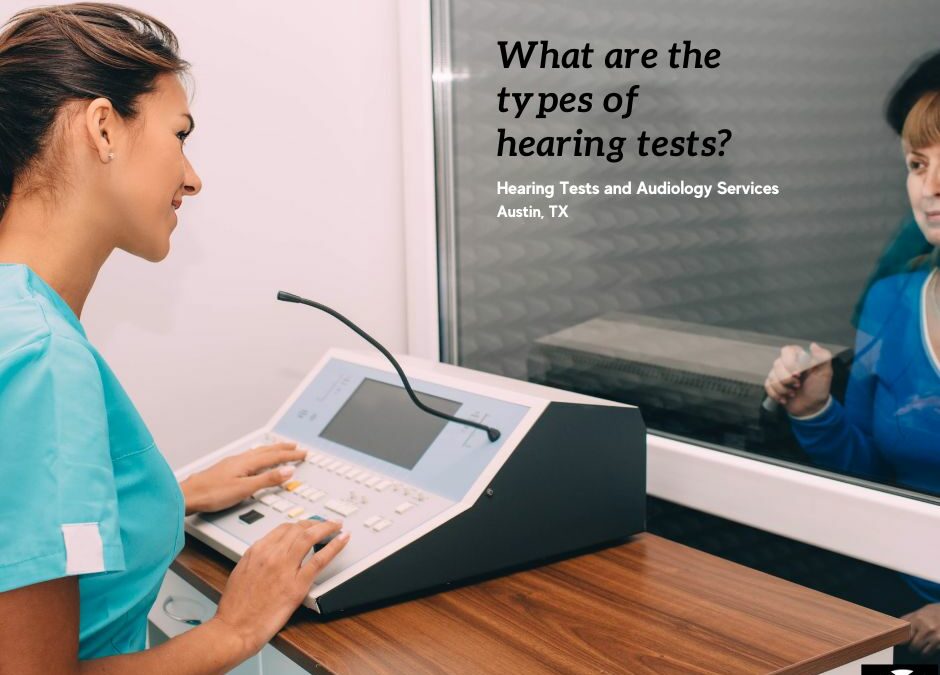
by Paula Rivers Au.D | Feb 5, 2024 | News
After hearing your family members or friends bug you about the television volume for the nth time, you’re now considering seeking professional help. An audiologist will provide hearing tests to diagnose and validate the nature and severity of your hearing loss.
Hearing tests are risk-free and comfortable and provide a baseline for your current hearing thresholds. The results are plotted on an audiogram, a visual representation to easily understand your current hearing capabilities.
Types of Hearing Tests
1. Otoacoustic Emissions (OAEs)
OAEs are sounds produced by hair cell vibrations in the cochlea of the inner ear. This form of examination employs a microscopic probe equipped with a speaker and microphone to trigger the cochlea and evaluate its response.
People with normal hearing will emit sound; those with hearing loss of more than 25 to 30 dB will not. This test helps identify if there is an obstruction in the ear canal, abnormal fluid levels in the middle ear, or damage to the cochlear hair cells.
OAE testing is also an integral part of hearing screening programs for newborns.
2. Auditory Brainstem Response (ABR)
ABR is used to determine the presence of sensorineural hearing loss (SNHL). This type of hearing loss manifests when there is an issue in the inner ear or with how the hearing nerve works.
Auditory Brainstem Response is used for neonatal hearing screenings. In an ABR examination, electrodes are connected to your skull, scalp, or earlobes, and headphones are provided. Your brainwave activity in reaction to noises of differing intensities is measured.
3. Acoustic Reflex Testing
This hearing test focuses on the involuntary muscle contractions of the middle ear. Through acoustic reflex testing, it is possible to pinpoint the source of the hearing problem, whether it is in the auditory nerve, cochlea, or ossicles.
4. Tympanometry
This type of acoustic evaluation is directed toward the middle ear, eardrum, and conduction bones. By creating variations of air pressure in the ear canal, audiologists can use tympanometry as an objective test of general middle-ear function.
The results gathered from this procedure provide additional needed information and dovetail with the results of other hearing tests for easier and more accurate diagnosis.
5. Speech Testing
This test is intended to determine the speech reception threshold (SRT), otherwise known as the quietest speech you can understand 50% of the time. It also assesses your ability to distinguish speech from ambient noise.
Speech testing or speech audiometry results provide important information as part of a comprehensive hearing evaluation. While other types of hearing tests directly evaluate hearing abilities, speech testing focuses on comprehension abilities.
6. Bone Conduction Testing
Through bone conduction testing, sounds will be sent through a specialized device. The gentle vibrations emitted during this test will directly stimulate the cochlea or inner ear, bypassing the middle and outer ear, and provide information about the nature and location of your hearing difficulties
This type of hearing test will allow audiologists to measure how well you can hear and help detect any issues with your middle and outer ear.
7. Pure Tone Testing
Also referred to as pure tone audiometry, this hearing test utilizes air conduction to evaluate your ability to hear sounds of varying pitches and intensities.
Various sounds (beeps and tones) will be transmitted through a specialized pair of headphones. You will be asked to respond by clicking a button or raising your hand whenever you hear a tone. The results will then be presented on an audiogram.
Hearing Tests in Austin, TX
RK Audiology provides a wide selection of hearing tests in South Austin, TX, and nearby locations.
Don’t wait until it’s too late – schedule your hearing appointment today!
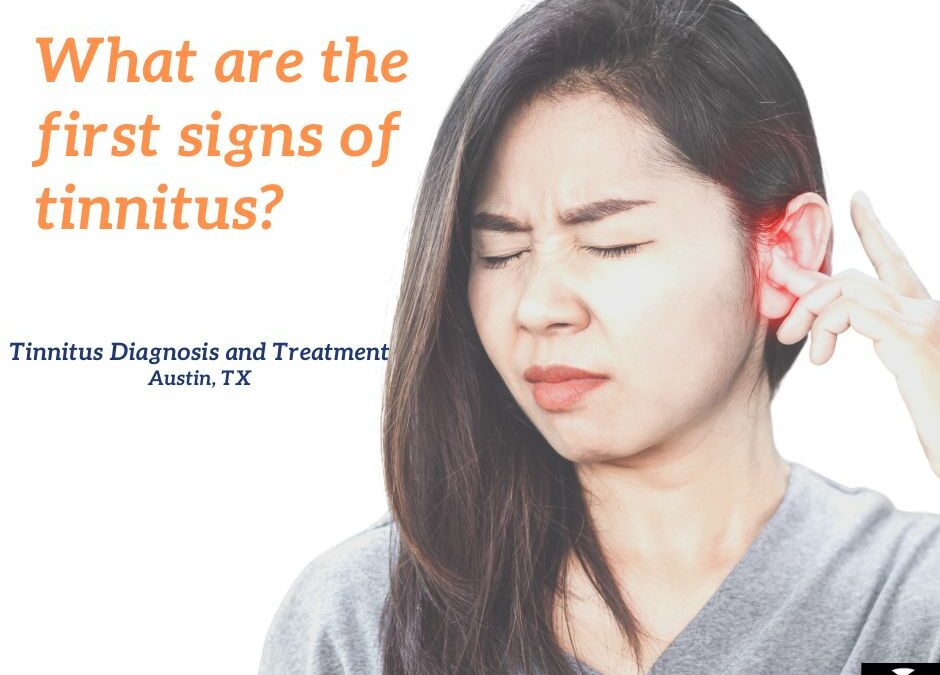
by Paula Rivers Au.D | Jan 26, 2024 | News
The National Institute on Deafness and Other Communication Disorders (NIDCD) estimates that approximately 10 percent of the U.S. adult population — over 25 million Americans — experience some form of tinnitus.
Tinnitus manifests as buzzing, whirring, hissing, whistling, or can be a single high-pitched beep.
As of this writing, no specific cause of tinnitus has been identified. Tinnitus, according to medical authorities, is more of a symptom.
Tinnitus is a widespread medical problem, and audiologists are frequently the medical professionals who identify and provide treatment.
Millions of individuals in the United States have tinnitus. This condition can be secondary to sudden or extended exposure to loud noises, change in medications, increase or decrease in caffeine intake, change in weight, presbycusis, a medical reaction, or other underlying medical concerns.
Tinnitus causes and triggers
Tinnitus can be caused or exacerbated by several factors.
It is commonly caused by damage to the inner ear hair cells. Small, fragile hairs line the inner ear, following the direction of sound waves. The motion allows the hair cells in the ears to generate electrical messages to the brain, which are then translated into sound.
Tinnitus occurs when the hair cells in the inner ear are damaged, causing them to release random electrical signals to the brain.
Tinnitus can also be caused by:
- long-term medical issues
- ear nerve damage
- problems with the brain’s hearing center
What age does tinnitus usually start?
Can you be too young or too old for tinnitus?
Tinnitus has been documented in approximately 15% of the world’s population; the majority ranges in age between 40 and 80. Chronic tinnitus prevalence rises with age, increasing to 14.3% in adults aged 60 to 69.
How to manage tinnitus
If you think you are experiencing the first signs of tinnitus (ringing in your ears, sensitivity to sounds in quiet environments), seek medical attention right away.
Tinnitus treatment and management will largely depend on your symptoms. Below are some popular ways to manage tinnitus:
- Learn relaxation strategies. Tinnitus can be more pronounced with focus on the tinnitus. Learning how to relax can help bring relief and prevent it from worsening.
- Avoid being in places that are too quiet.
- Increase ambient noise so you can be distracted from focusing on tinnitus sounds.
- Use appropriate hearing protection.
- Maintain an active and healthy lifestyle.
- Neck massage: Tinnitus symptoms can be reduced by relieving tension in specific neck muscles and with medical massage treatments. targets specific muscles in the head, neck, upper back, and jaw. When done by a professional, this massage may help relieve tension and lessen the severity of tinnitus symptoms.
When should I see a doctor for tinnitus?
You should see an audiologist immediately if
- You notice that tinnitus is only in one ear
- The sound is negatively impacting your sleep and ability to focus
- You experience hearing loss and dizziness
- You notice that the sound seems to be pulsating or in sync with your heartbeat. Problems with blood pressure can induce a specific type of tinnitus. Pulsatile tinnitus occurs when tinnitus sounds like a pulsing or pulsating sound in the ears. This type of tinnitus is usually caused by blood vessel injury.
Does tinnitus ever go away?
ew cases of tinnitus may subside within 6-12 months of onset. With severe tinnitus, you will most likely hear it less frequently over time, with treatment, even if it lingers beyond this timeframe.
Is tinnitus a physical or mental problem?
Tinnitus is a medical ailment that causes ringing in the ear or head even when there is no external physical noise present. Tinnitus isn’t an illness in and of itself. It is a sign of a problem with the auditory (hearing) system, which comprises the ears and the brain.
Accurate diagnosis is key when dealing with tinnitus. Working with an audiologist specializing in tinnitus will help you overcome this condition.
Audiologists in Austin, TX
If you are experiencing tinnitus, hearing loss, or some other hearing issues, it’s best to see an audiologist to get a hearing test.
RK Audiology has audiologists ready to help you get back on track and live your best life.
Contact us today to schedule a consultation!
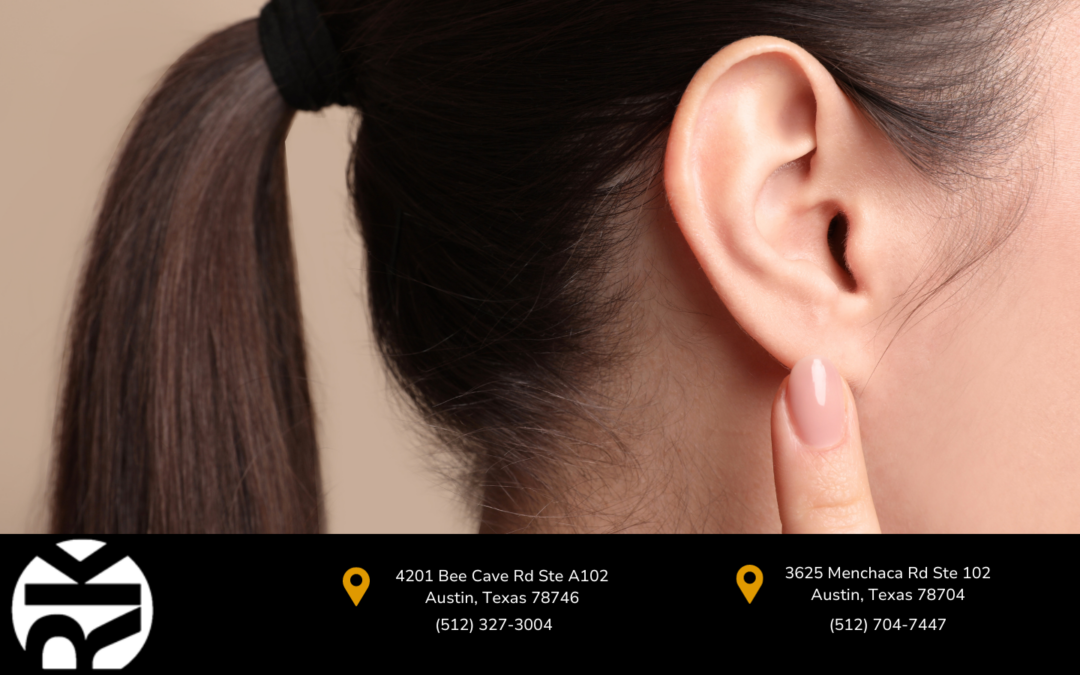
by Paula Rivers Au.D | Oct 1, 2023 | News
The wax from the ears is normally eliminated by the body. The ability to eliminate ear wax is part of the normal ear function. Earwax is designed to come out of the ear canal through movements of the jaw such as yawning or chewing. However, not everyone produces earwax at the same pace; some individuals may create more earwax, which may result in impaction as well as other auditory problems.
It may be a common practice in your household to clean your ears with a cotton swab, but it’s not actually a smart idea. As audiologists, we discourage any method of DIY ear cleaning, whether it involves cotton swabs, bobby pins, ear candles, etc.
In all honesty, none of these items will produce good results. It doesn’t matter how many YouTube “ear wax removal” or “ear cleaning” video tutorials you watch; you cannot fully clean your ears or get rid of impacted earwax unless you see an audiologist.
In fact, if you pierce your eardrum or make the obstruction worse, you run the risk of getting an ear infection or perforating your eardrums.
Why is earwax buildup removal necessary?
If an excessive amount of earwax has accumulated in your ears, professional cleaning is required. It is crucial to clean your ears because failing to do so may lead to infections and other auditory issues like earaches, vertigo, tinnitus, or hearing loss.
Most people use cotton swabs in an attempt to remove earwax from their ears. Cotton swabs shouldn’t be used to remove wax because doing so could only push the particles deeper into the ear.
Cotton swabs should only be used to clean the outer part of the ear. Never insert cotton buds or Q-tips into your ear canal to avoid harming your inner ear and eardrum.
What is the most effective way to clean your ears?
Visiting an audiologist is the safest method to get rid of wax accumulation. An audiologist may use specialized tools, such as forceps, a cerumen spoon, or suction equipment to remove the obstruction. Some audiology clinics also provide professional irrigation services.
Earigator in Austin, TX
The Earigator is a recently introduced ear irrigation system that uses a secure and tried-and-true method to “flush out” the ear canal and structure. This one-of-a-kind device combines an otoscope with the entire functionality of a conventional ear irrigation system, giving us complete visibility and control over the procedure.
The device features a built-in temperature control feature that consistently adjusts the water’s temperature to conform to your body’s temperature. You can prevent any caloric impacts or unwelcome vertigo symptoms as a result. Precision-level pressure controls guarantee prompt, efficient clearance of even the most difficult accumulation while completely avoiding eardrum damage.
The process just requires 3-5 minutes per ear, which is far quicker than conventional techniques.
You can now experience the comfort and convenience of the Earigator at RK Audiology. Choose from one of our conveniently situated offices in Austin or Westlake to get your ears examined by one of our licensed and experienced audiologists.
Professional ear cleaning in Austin, TX
Earwax buildup symptoms are not at all enjoyable. Visit an audiologist straight away if you experience any symptoms that make you think you might have earwax impaction or another auditory issue.
Get a thorough ear cleaning from a reputed audiologist to protect the health of your ears. Through professional ear cleaning, you have the peace of mind that your hearing health is in good hands. With professional ear cleaning, you get to enjoy clean and healthy ears without any risks.
RK Audiology provides professional ear cleaning services in Austin, TX, and nearby locations. Contact us today to book an appointment!
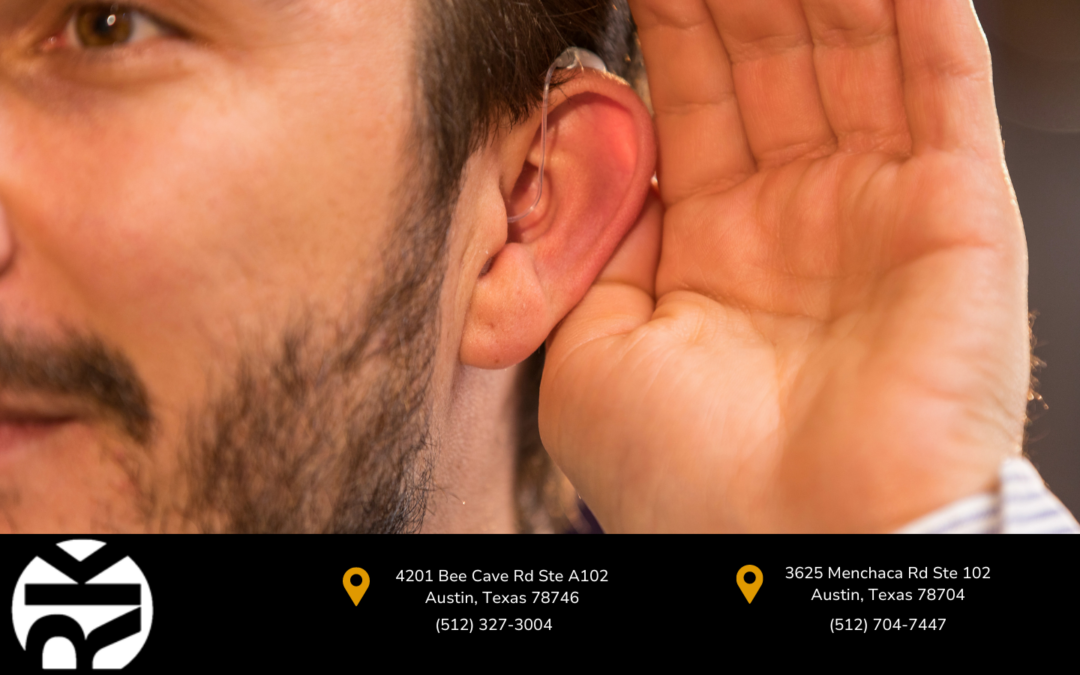
by Paula Rivers Au.D | Sep 1, 2023 | News
Is it possible to improve your hearing once hearing loss has occurred?
Hearing loss could happen to anyone, regardless of age or gender. Hearing loss affects one in three people over the age of 65 and half of people over the age of 75. Age-related hearing loss is known as presbycusis. There is no medical or surgical treatment for hearing loss caused by noise. Damaged hair cells of the ear do not regenerate, hence, you should do your best to protect your hearing. If you are already diagnosed with hearing loss, you should make an effort to prevent it from getting worse.
In this blog post, we’re going to share with you simple tips on how you can improve your hearing.
Keep the volume down
Keeping the noise level as low as you can is a simple strategy to improve your hearing comfort and health. If your surroundings are 85 dB or louder, you should, wherever feasible, go away from the loud noise. If this is not an option, be sure you constantly wear hearing protection to prevent any major damage to your hearing.
Be on the lookout for earwax
A buildup of ear wax may have an impact on your ability to hear. Your ears might not be as sensitive to noises as normal if ear wax is blocking them. But don’t panic; ear wax buildup is both typical and fairly manageable. The consequences of hearing loss can be reduced or even completely eliminated with professional ear wax removal.
Stay fit and active
Your ears will benefit from your overall health if you stay in shape, and regular exercise is the simplest way to do this. You may improve your blood flow and cardiac circulation by walking or jogging, gardening, cleaning the house, or even simply completing simple household chores.
Yoga and Relaxation
Many people who experience hearing loss claim that occasionally, practicing yoga can improve their hearing. Your head receives more oxygen-rich blood while you are relaxed and stretching in poses like downward dog, which may improve your hearing.
Improve your hearing by observing proper ear hygiene
Bacteria and fungi flourish in the ear canals’ cozy, dark environment. If water gets inside your ears, it’s possible for germs and fungus to start growing there. Otitis externa, sometimes referred to as swimmer’s ear, is an ear infection. Ear infections can cause discomfort, discharge, itching, and a feeling of fullness. Recovery from swimmer’s ear might take up to six weeks, perhaps longer. Keep your ears dry and germ-free to prevent ear infections.
Wear hearing protection
The most frequent and easily avoidable cause of hearing loss is exposure to loud noises. It is advisable that you use dependable hearing protection if you are going to a place or attending an event where you will be exposed to loud noises. Even though it may sound cliche, the greatest method for improving hearing is to guard against damage in the first place. Keep the volume on your earphones, headphones, or earbuds at no more than 60% to prevent hearing loss. Consult your audiologist for the finest occupational hearing protection if your employment routinely exposes you to loud noises.
To know more about how to improve your hearing, talk to the experts. RK Audiology connects you to the best audiologists and hearing aids in Austin, TX, and nearby communities.
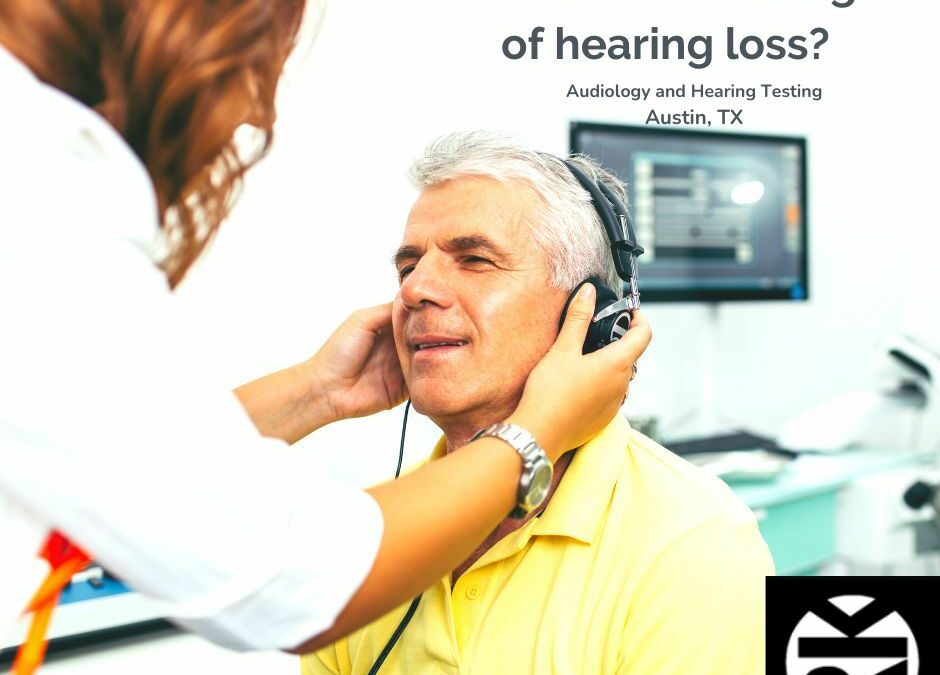
by Paula Rivers Au.D | Apr 24, 2023 | News
Hearing loss may occur gradually or suddenly. Being familiar with the hidden signs of hearing loss is important for early detection and intervention.
A person is said to have hearing loss if their hearing abilities are less than those of someone with normal hearing, which is characterized by hearing thresholds of 20 dB or greater in both ears. This disorder, which can be mild, moderate, moderately severe, severe, or profound, can affect one or both ears.
With time and exposure to loud noise, the nerve cells or microscopic hairs in the cochlea that carry sound signals to the brain may degrade. When fragile nerve endings are destroyed, electrical impulses cannot be transmitted effectively, which causes hearing loss.
When should you visit an audiologist and what are the five signs of hearing loss?
Ringing in the ears or tinnitus
It is estimated that one in five persons who have hearing loss also has tinnitus. This disorder, often known as ringing in the ears, happens when someone is exposed to extremely loud sounds (i.e gunshots, explosions).
Nearly 90% of people with tinnitus also experience hearing loss. The thing is, tinnitus frequently imitates the rhythm of your loss. If you have difficulty hearing high frequencies, your tinnitus could be perceived as a high-pitched ringing or buzzing.
If you encounter any strange hearing problems, seek medical treatment from an audiologist as tinnitus may be an early indicator of hearing loss or some underlying medical condition.
Muffled or distorted hearing
If anything as basic as congestion brought on by a common cold or an allergy is the cause of the muffled hearing, it may eventually go better on its own. However, you need to rule out more serious causes of muffled hearing, such as hearing loss, head injuries, or tumors.
Overproduction of ear wax is a typical contributor to hearing loss (cerumen). An obstruction in the ear canal can occasionally be caused by ear wax accumulation. The ear wax may harden and dry up over time, increasing the likelihood of impaction, which in turn could affect or impair your ability to hear.
Listening fatigue
Listening fatigue develops when your brain must concentrate to distinguish sounds from background noise before processing and transforming them into meaningful information. People who seem “tired of listening” are sometimes misunderstood to be obnoxious, disinterested, or insensitive.
When hearing loss is present, the brain has to perform harder than usual to compensate for the disability, which leads to stress and exhaustion.
Struggling to hear in mild-to-moderate background noise
If you have hearing loss, it could be more challenging to converse with others. If you have trouble hearing conversations in the presence of background noise, it’s possible that your ears have issues blocking out external sounds. Struggling to hear, especially in the presence of modest background noise, is frequently the first indicator of moderate hearing loss or auditory processing disorder (APD).
Less enthusiasm for social activities
Humans who have hearing loss are more likely to experience social isolation. People frequently opt to detach and isolate themselves rather than engage in social, professional, or business contexts where interaction is necessary when hearing becomes problematic. Hearing loss can cause psychological and social issues that affect one’s feelings and society if it is not remedied.
Many of life’s most cherished experiences, such as hearing a loved one’s voice or laughter, engaging in meaningful discussions with family and friends, admiring the sounds of nature, or watching your preferred TV shows or sporting events, can be challenging to enjoy and participate in if you have hearing loss.
Experiencing signs of hearing loss?
Get your hearing tested!
If you believe that you or a loved one is exhibiting early signs of hearing loss, make sure to schedule an appointment with an audiologist to get your hearing tested. RK Audiology offers comprehensive hearing testing in Austin, TX, and nearby communities.
Got more questions about hearing loss? Ask an audiologist today!

by Paula Rivers Au.D | Apr 4, 2023 | News
There’s a common misconception that prescription hearing aids are expensive. This leads people to consider cheap hearing aids to solve their hearing problems. The question is, are cheap hearing aids worth buying?
Are hearing aids that are less expensive any good? A large number of customers are enticed to test out hearing aids due to the low cost of these devices, which can be found on the internet. Many reputable hearing aid manufacturers offer models at reasonable prices without sacrificing the quality of the products themselves. This is done in order to attract a larger customer base.
What do you need from a hearing aid?
Before purchasing a hearing aid, you need to give some thought to the functions that you value the most in such a device and take those into consideration. need a more sophisticated device that comes with a variety of features such as automatic noise filters, directional microphones, etc.?
If you have a clear idea of what features you need from a hearing aid, the process of weighing the various options that are available to you will be much less confusing.
There is no guarantee that cheap hearing aids will fix the problems with your hearing, so don’t waste your money on them. Consider it in this light: in order to address a patient’s unique hearing loss, a hearing aid needs to be programmed and fitted by an audiologist. An audiologist is a specialist who diagnoses and treats hearing loss. Buying a cheap pair of hearing aids without getting a hearing test or without seeing an audiologist is expected to yield unsatisfactory results.
Most of the cheap hearing aids available online are merely amplifiers disguised as hearing aids. Yes, they provide amplification but addressing hearing loss is not all about simple amplification. For a hearing aid to work properly, proper programming, fitting, and adjustments are needed and should be performed by an audiologist or hearing care professional.
Getting what you paid for
If you get cheap hearing aids online, you should anticipate receiving far less than what you spent. This is due to the fact that cheap hearing aids are often made in bulk batches without following quality standards. As a result, cheap hearing aids are greatly de-featured and offer zero to little hearing improvement.
Why you should invest in a good pair of hearing aids
Hearing aids that are accessible only with a prescription from an audiologist offer a wider number of advantages and features than less expensive hearing aids. Hearing aids come with a better level of after-sale service, warranty, and support.
If you want to experience the most significant enhancement in your hearing and get the most out of your money, you should opt for a hearing aid that was created by a recognized manufacturer. If you look at the long-term benefits, investing in hearing aids from a reputable brand is better than buying cheap hearing aids that could make your hearing worse.
Audiologists at RK Audiology are ready to assist you in selecting a hearing aid that is tailored specifically to meet your needs, budget, and lifestyle.
Bottomline
In conclusion, it’s best to consider the features and functionality of a hearing aid aside from its price. Don’t be tempted to purchase a hearing aid just because of its insanely low price and aggressive marketing ploys.
Most cheap hearing aids lack the essential functions that prescription hearing aids offer. Hearing aids that can be acquired online for a low price generally lack proper fitting and evaluation, both of which play a significant part in the success of hearing aids.
At RK Audiology, we will make sure that your hearing aid is correctly suited to your ear, snugly fit, and all set to meet your unique hearing needs. We offer numerous models of hearing aids in store, sourced from the most reputable manufacturers in the business so that we can offer you access to a greater selection of hearing aid solutions to meet your needs.
Curious about the latest hearing aid technology? Ask an audiologist for insights.

by Paula Rivers Au.D | Mar 19, 2023 | News
Hearing aids play an important role in helping a person with hearing loss function better in every aspect of life. As a popular choice of hearing solution, hearing aids can be considered an investment. The price range of hearing aids varies depending on the brand, material, technology, power, etc., but one thing is for sure – you need to make an effort to ensure that your hearing aids will last.
In this blog post, we’ll share with you various factors that affect the lifespan of your hearing aids as well as tips on how you can take good care of these compact, highly-intelligent, delicate devices.
Proper Cleaning and Maintenance
Since hearing aids get in contact with skin and the inner parts of the ear, it is susceptible to moisture, sweat, dirt, etc.
Proper cleaning and maintenance of hearing aids will significantly help extend their life span. Clean your hearing aids before going to bed by wiping off any visible dirt with a soft, dry cloth.
Air-dry hearing aids after cleaning. The #1 enemy of hearing aids is moisture. It’s a big help to let hearing aids air dry for several hours (preferably throughout the night) and have the battery compartment open (if applicable).
If you see dirt or moisture build-up on parts of your hearing aid that you cannot seem to reach, bring your hearing aids to your hearing care provider for professional cleaning and maintenance.
Proper Handling and Usage
Hearing aids are subjected to wear and tear every day. Practicing proper handling and storage when the hearing aids are not in use can help determine how long your hearing aids will last.
When not in use, keep your hearing aids in a safe and dry place. Most hearing aids come with their own protective case (some may double as a charging case). Protective cases of hearing aids are designed to protect them from sudden impact or moisture. Some hearing aid cases also come with a built-in dehumidifier to ensure that any residual moisture will be gone.
Avoid putting hearing aids inside a pocket, pouch, or bag that may put these tiny gadgets in jeopardy of getting squished or broken.
Avoid dropping hearing aids at all costs. If possible, put on your hearing aids while sitting down so that in case you drop them, the distance from the floor will not put so much impact on the device.
Regularly change batteries
This is applicable to hearing aids that are powered by disposable batteries. Follow the manufacturer’s instructions when it comes to how long one set of batteries can be used.
Avoid using old batteries on your device to prevent sub-par performance. Make sure to put in the right battery size with the right voltage to avoid any detrimental effects.
Professional hearing aid repair and service
If you notice that your hearing aid is not working as it should, bringing it in for a professional checkup might be in order. Audiologists are trained and knowledgeable in checking hearing aids to accurately diagnose what could possibly be wrong with the hearing aid.
If you cannot seem to address the issue through basic troubleshooting, don’t attempt to fix it on your own. You must absolutely not tinker with the device, to the point of opening its screws, crevices, etc.
You might put your hearing device’s warranty at risk if you tinker with the hearing aid, so it’s best that you bring it to your hearing care provider for proper care, repair, and/or maintenance
Hearing Aid Maintenance and Repair | Austin, TX
RK audiology offers professional hearing aid maintenance and repair services in Austin, TX.
Contact us today to know more about our audiology services!
Got more questions about hearing aids? Ask an audiologist for expert advice!

by Paula Rivers Au.D | Apr 1, 2022 | News
Hidden hearing loss gains more attention day by day. However, most people have never heard of it. How does this curious condition work? And how does it change how we think about hearing?
How does hidden hearing loss differ from traditional hearing loss?
When we think of hearing loss, we’re often thinking of a loss of sound. If you’ve ever observed or taken part in a traditional audiogram, you know the test involves playing sounds at various pitches and volumes. The test subject must then indicate which sounds they heard by raising their hand or pushing a button.
The type of hearing loss revealed by this test happens because of damage to hairlike cells in the inner ear, aptly named hair cells or stereocilia. Here is how those cells come into play:
- Sound waves enter the ear canal—the outer ear—and vibrate the eardrum.
- In the middle ear, the eardrum creates a chain of vibration through three bones—commonly referred to as the hammer, anvil, and stirrup (or malleus, incus, and stapes)—that then passes into the inner ear, to the snail-shaped cochlea.
- These vibrations enter the fluid-filled cochlea, where different frequencies determine which part of the cochlea the fluid vibrates.
- The vibrations cause waves in the fluid, which move hair cells lining the cochlea, creating signals that travel through the auditory nerve and into the auditory centers of the brain.
If those cells are damaged, you lose hearing at a certain volume or perhaps just certain pitches, e.g, low tones or higher tones.
With hidden hearing loss, however, it is not the hair cells that are damaged, but cells in the brain itself. Imagine that you are trying to figure out a problem with your computer. After some tinkering, you discover that the fan isn’t working properly, or perhaps some wires have come loose. These are hardware issues, and damage to the outer, middle, or inner ear (where the hair cells are) works much the same way. However, your problem may be related to software. If something has damaged a piece of software on your hard drive, you may lose pieces of the data for that software, and that’s what is happening with hidden hearing loss.
An analysis of music shows that different parts of the brain light up for different aspects of music besides just tone and pitch, such as rhythm, memory, and emotion. Likewise, synapses—cells that bring information to different parts of the brain—are vital to the hearing process. If these synapses become damaged, the information often comes through incomplete, garbling the message.
Ultimately, this means a person might have no problem understanding someone during a conversation in a quiet room, but may struggle to hear in a noisy environment, such as a stadium full of a roaring crowd or even a busy restaurant.
Do I have hidden hearing loss? What can I do about it?
Since the term hidden hearing loss has only been around since 2009, and few people visit audiologists, it is very difficult to know how many people this condition affects. To complicate matters, testing for this kind of loss is still in the early stages. The Associated Press (AP) created a test in 2017; however, this is not a scientifically backed medical tool. Rather, this test provides an interesting look into how background noise affects hearing.
The test itself is a simple audio clip. It starts out with no background noise while a male voice comes on at intervals, telling the listener to repeat the sentences he says. “White” background noise is then introduced and increases every couple of phrases.
At first, the background noise sounds much like the inside of a car as it travels down a highway: soft, muted, and hazy; more an impression of noise than anything else. As the background noise increases, these impressions continue, resembling different environments or types of white noise: television static, rain, and others come to mind.
One assumes that with each increase, it will become more and more difficult to understand the phrases. However, response to the clip showed that people often missed phrases at random intervals—for example, missing one closer to the beginning and then having no trouble until later. This implies that hidden hearing loss is not a linear progression, and damage to these synapses affects very specific parts of the brain while not affecting others. This means testing will have to look for different criteria than traditional hearing tests.
It may be a while before we have effective tests for diagnosing this type of hearing loss, but you can still start managing this issue. Researchers are looking into treatments and you can do your own interventions, such as asking your conversation partners to talk slower (rather than louder), being strategic about where you sit in noisy environments, or getting set up with one of the many new technologies that incorporate background noise canceling and other methods.
Worried about your hearing? Ask an audiologist for a professional opinion.
Your audiologist can help you figure out the best interventions to manage your hearing loss and prevent it from getting worse. Schedule an appointment today!
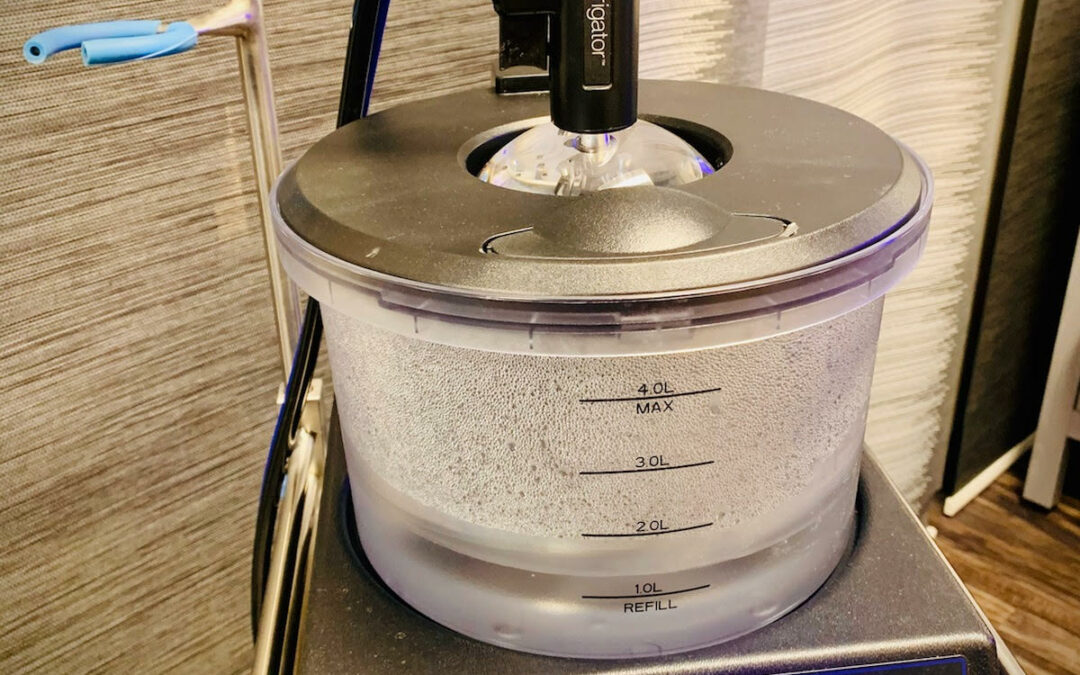
by Paula Rivers Au.D | Apr 1, 2021 | News
Ear wax removal is an important part of hearing health, and here at RK Audiology, we’re stepping up our game with the new EarigatorTM from Nupurtech. This new piece of technology is easy to use, and a safer, more comfortable way to clean ears. Clients have even referred to it as an “ear spa.” Here’s a quick breakdown of this new technique.
How the EarigatorTM works
The EarigatorTM nozzle flushes body temperature water into the ear, dislodging impacted cerumen (earwax) that can cause hearing difficulties. The catch basin is shaped to fit snugly under the ear, preventing the removed earwax from getting on clients’ clothes, hair, or body. In addition, a smock is worn by the client during the procedure, which takes as little as five minutes.
Why the EarigatorTM is so effective at earwax removal
The EarigatorTM is part otoscope, part irrigator, allowing your audiologist a more accurate view as they are cleaning your ears. This is also helped by the LED light and magnifying glass attached directly to the nozzle.
The nozzle spray itself can be adjusted for both temperature and pressure, allowing the most comfortable experience for you, the client. It is made more comfortable by its simple and thoughtful design: a trigger nozzle to help the audiologist control the pressure more easily, a shield to reduce splashback, and a well-designed catch basin. These small, simple features make this the safest and most effective earwax removal technology available.
It’s so effective, it’s even used in emergency rooms.
Our new earwax removal procedure
At RK Audiology, we are always looking for the safest and most effective ways to serve our clients. The EarigatorTM has allowed us to create a more streamlined procedure that will continue to keep you safe and comfortable. We love feedback from our clients on how we can improve our services, so let us know what you think!
- As always, we start with a sterile environment, following the latest CDC guidelines.
- We begin by reviewing your ear health history with you – including discussing any history of pain or discomfort, and/or any previous ear surgeries. This is the perfect time to ask questions.
- We use video otoscopy to view your ear canals and eardrums. With our large monitor, you will see what we see during your ear cleaning appointment.
- The water is pre-prepped to a comfortable temperature.
- We have you wear a smock and the water basin is placed in position under the ear to be cleaned.
- The audiologist will check water temperature and begin the procedure, cleaning one ear at a time.
- Once the procedure is complete, the audiologist will dry your ears and view both ears again using the video otoscope, giving you and the audiologist a ‘before’ and ‘after’ view.
Check out our brand new page for ear cleaning. You can make an appointment to get your ears cleaned with this brand new tool by taking our Online Hearing Test and then scheduling an appointment today.










